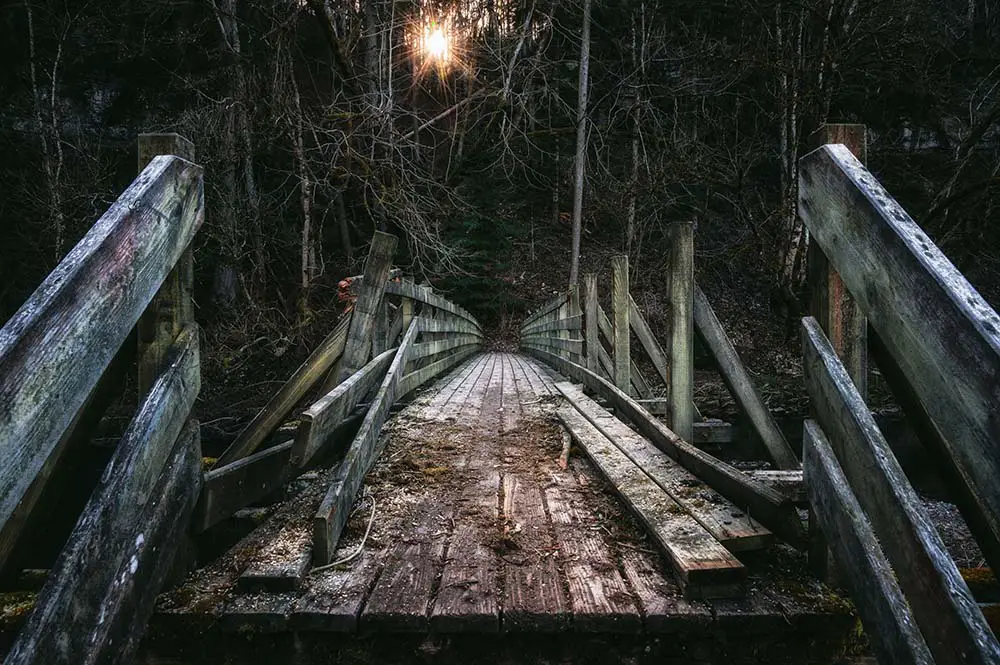There are many ways to write a horror story. The basic structure is the same whether you are telling a traditional ghost story or a modern story about an axe murderer.
Start by creating characters that people will care about. Then, set the mood and build suspense. Use a threat that your readers can believe in and then have a big, dramatic scene. Let the horror build and then bring on the gore.
Once you know how to structure a horror story you can create any number of written works. Here are some steps that will make it easy.
Create Characters Your Readers Will Care About
The most crucial step in writing a horror story is creating characters your readers will care about.
Setting the scene and creating a scary or tense atmosphere can help, but it’s not enough if you don’t have any characters with whom the reader can relate or sympathize.
In the opening scene of your story, you want to hook your readers immediately. If they don’t care about the main character and his situation, you’ll have difficulty getting them to continue reading.
You can give them a reason to keep reading in the first chapter by introducing a compelling character or situation.
For example, if one of your characters finds himself trapped on an island, it’s much easier for readers to get invested. What if he never knew why he was there? What if other people needed his help?
The reader cares more about what’s going on with him than who he is as a person.
Set the Mood
As you create each scene in your story, think about how you want it to feel. Each scene should have a distinct mood.
Also, as you transition between scenes, the mood should change. Each new scene should either be more upbeat than the one before or more negative. This engages the reader and keeps the story interesting.
If the mood doesn’t change, the story becomes flat. If you find your story is becoming uninteresting, check how the scenes connect. Maybe your scenes all have the same mood.
Use a Slow Build-Up to Create Suspense
To build suspense, slowly reveal details as you go. This can create a sense of anticipation as readers wonder what will happen next, and it’s an effective tool for getting them hooked on your story.
Suspense is key to any horror story. Without it, the story would be boring and predictable.
A slow build-up to suspense can be done in many ways, including:
- Start with a small detail that sets off a chain reaction of events that leads up to the final confrontation with the monster or evil entity your characters are trying to defeat
- Have your characters notice something unexpected at some point in their pursuit of the monster or evil entity they are trying to defeat
- Have them discover clues as they go along which point them in the direction of where they must go next
- Have them meet someone important who could help them with their quest (e.g., a detective)
Add a Threat Your Readers Can Believe In
A good horror story will make readers fear for their lives, but they must also believe that the threat is real and could happen in their world.
If you’re writing a tale of monsters from another dimension, how would a human react when seeing them? How would they react if these creatures came into their own home and attacked them?
For readers to believe in this threat, you should create a backstory explaining how these creatures came to be and why people fear them.
If you want to write about vampires or zombies, there are plenty of books with ready-made backstories that you can use as inspiration for your work.
Check out this article for some good Words to Use in a Horror Story
Things Get Serious
The big dramatic scene is when everything comes together, the tension mounts, and we finally see what’s going on.
The characters are in grave danger and forced to make hard choices. This is where you can unleash all of your best horror storytelling tricks.
You could have them do something unexpected or act out in ways entirely out of character for them.
This is also a great moment to throw in any twists and turns. Your readers won’t see them coming quite as quickly as they did earlier in the story arc.
Let the Horror Build Up
Now it’s time for the horror to build up until it reaches its peak at the big dramatic scene.
You can do this in many ways: by adding more tension to what was already there, by ramping up the intensity further, or by making things even more confusing than they were before.
Read how to Express Horror here
Bring on the Blood
Blood is one of the best things to happen in any horror story. Horror is supposed to be visceral. Use gore at some point in the story because it creates a sense of shock and repulsion.
The more blood there is, the more horrifying it becomes, which should be kept in mind when structuring your story.
Everyone Is Safe in the End… Or are They?
Now it’s time to wrap up any loose ends.
Ensure that everyone who needs to be saved has been saved and every mystery has been answered. It may help if you take notes throughout the writing process so you can remember all the story threads.
Leave the Reader With a Lasting Thought
The last step is to leave the reader with a lasting thought or feeling.
The story has to end emotionally, leaving the reader thinking about what they just read and how they want to know what happens next.
Final Thoughts
That’s it. With these steps, you should be able to make up a horror story with ease. Good luck and happy writing.





